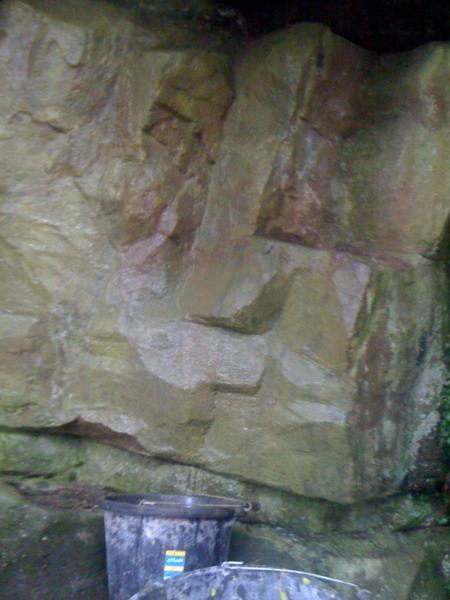The Rock Garden, Rosshall Park, Glasgow
We carried out an extensive Condition Survey Report on the rock garden in early 2006. In 2010, after the Glasgow City Council secured HLF, we were engaged to return and carry out the recommended repairs and renovation works. We were on site for for a total of 6 weeks.
1: Structural Crack
The majority of these type of cracks are historic, having been caused by root growth from adjacent planting, over the years. They mainly occur in the planters where the tree roots grow out of their restricted space causing damage to the planter walls. The crack has been raked out and cleaned, prior to the repair.
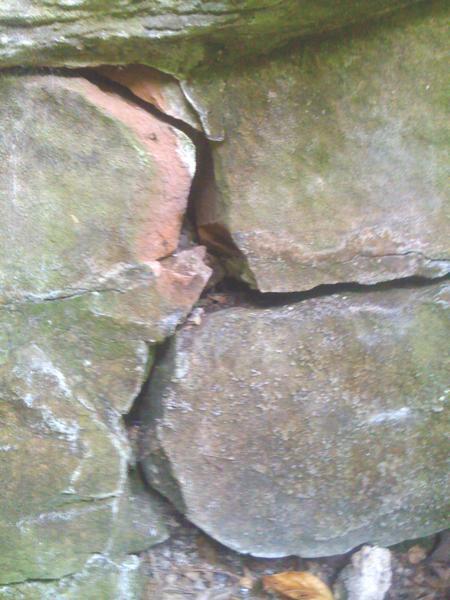
2: Repair to Crack
Following on from Photo 1), the crack has been primed with water, and then injected with wet render using a grout gun. This way we can ensure that the render penetrates to the back of the crack. The new render is then surface dressed using sponges and hand tools to blend in with the adjacent rockwork

3: Structural Crack
Here we see Alan Bishop using a grout gun to inject grout mortar into a substantial horizontal structural crack. This crack had appeared at the junction of the large load-bearing slab of sandstone (which had been used to form the basis of the rock arch), and the clinker construction of the planter which was constructed on top of it above. It had occurred some time back, and may have been caused by settlement or movement of the structure.
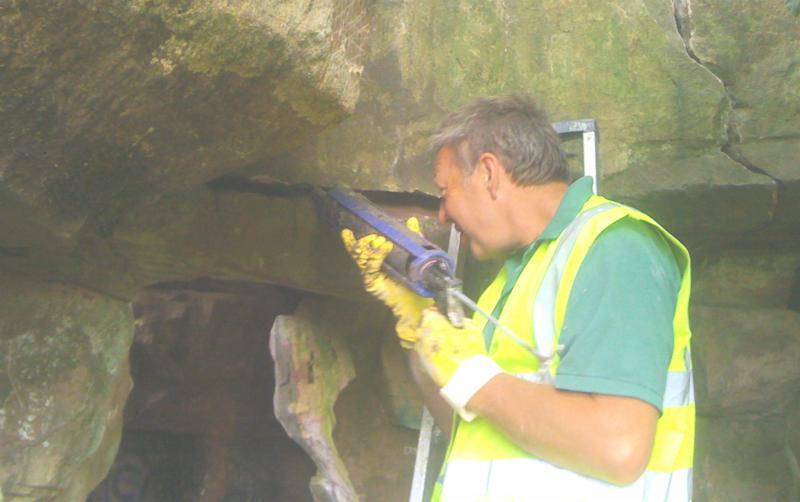
4: Repair to Conglomerate Rock
This photo shows a good example of Pulham's faux conglomerate rockwork. The crack was caused by self seeding saplings, which had grown up behind the rockface, causing damage from root growth.
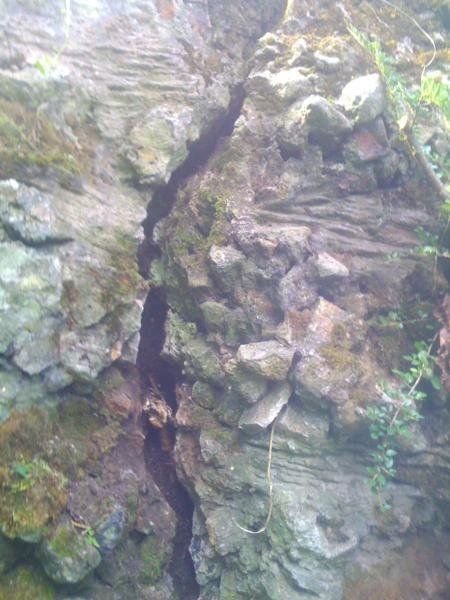
5: Repair to Conglomerate Rock
Following on from Photo 4), we see the finished repair. The crack was injected with render grout using a grout gun, and then finished off with fresh pieces of mixed size stone pressed into the wet render to disguise the repair and emulate real conglomerate rock
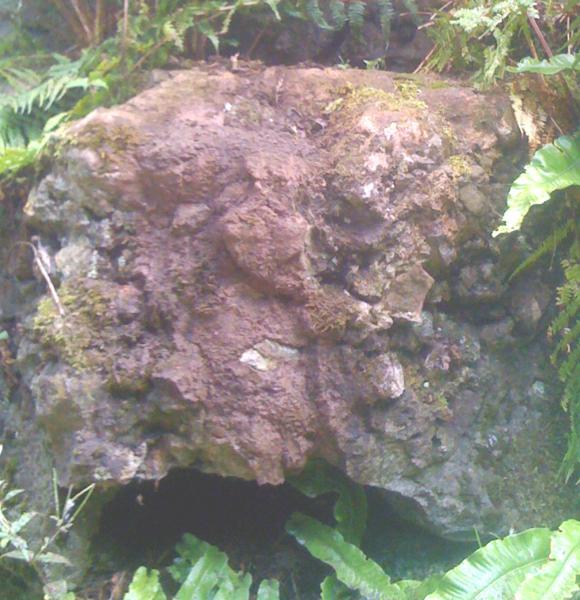
6: Repair to Conglomerate Rock
Here we see a repair being finished to another area of conglomerate rock. Pieces of mixed size stone are being carefully pressed into the wet render to complete the effect
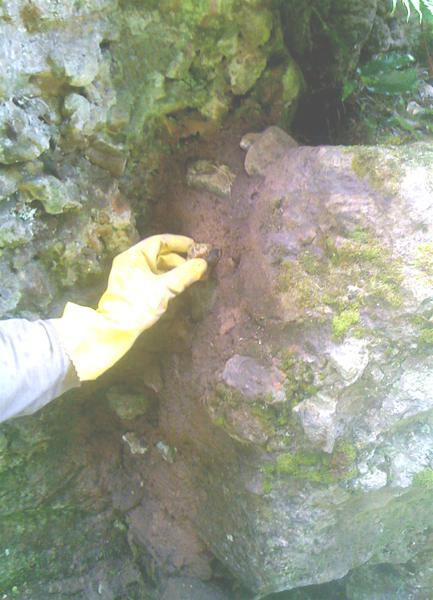
7: Grafitti Damage
Being a public garden, Rosshall was prone to vandalism and especially graffit. This was especially prevalent in the sunken Grotto. There is much discussion in conservation circles as how best to deal with graffiti. Cleaning is the best option, but the removal of spray paints sometimes requires the use of powerful chemical solvents and/or aggressive jet washing. This may remove the graffiti, but it also removes all the immediate and adjacent weathered patina of the rockwork. After much discussion, we opted to overspray the areas of graffiti with green and sandstone coloured colour washes, to reduce their visibility.
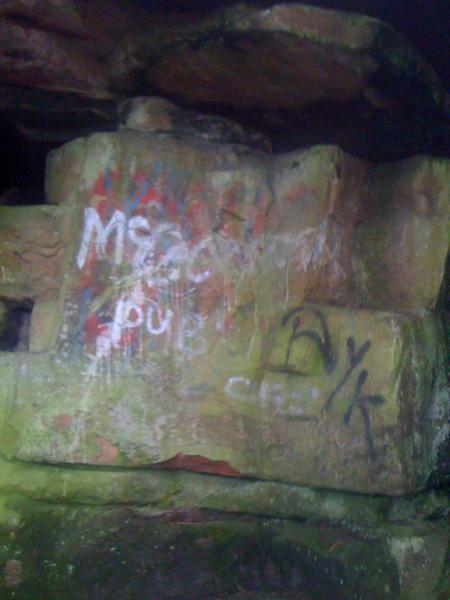
8: Graffiti Treatment
Following on from Photo 7), here we see the results of applying a series of colour washes, using water-based, exterior grade masonry paint. Although the graffiti is still there, it is no longer so obvious to the casual observer.
